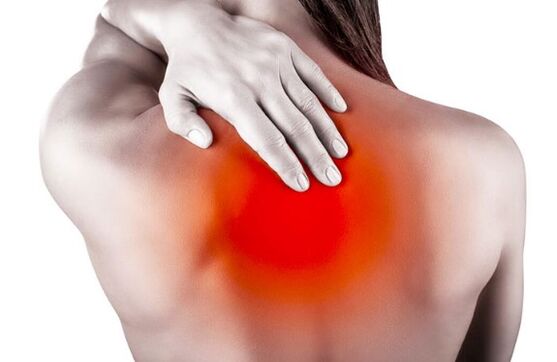Osteochondrosis should be taken seriously. Only the uninitiated think is just a disease that is easy to deal with without the help of a specialist. For effective treatment, you should take the problem thoroughly. Turn off large loads, lead a measured lifestyle, eat properly and perform special exercises. In the acute phase, help for medicines and constant supervision of a doctor will be required.
Distribution processes leading to a partial or complete change in intervertebral discs. The vertebrae, shrinkage, lubricate discs that under the influence of loads, infections, malnutrition, lose their elasticity. Cleaning, the disks begin to lubricate on the nerve endings, which causes unbearable pain. The disease at an early stage does not cause serious problems, but the earlier the patient turns to a specialist, the more effective the treatment will be.
If you do not start treatment immediately, the process can become irreversible and transferred to the tissue of the vertebrae. Disk distribution leads to a gradual weakening of external fibrous rings. Patients with osteochondrosis often face complications such as convexity and spinal hernia.
Regular studies in this area provide disappointing statistics. People over thirty years of age are often facing spinal disease, 70% of patients suffer from various forms of osteochondrosis. It is a neurological disease that affects the connections of the intervertebral compounds. It is accompanied by acute pain, pressure jumps and other symptoms that often do not allow people to lead a familiar lifestyle and work normally.
Osteochondrosis does not occur without cause, abruptly, with acute pain. The first symptoms are minor and imperceptible. With an unexpected worsening of a good behavior, the appearance of unpleasant sensations in the spine that quickly pass, do not neglect the signals of the body. It is necessary to consult a doctor immediately for advice and to undergo a full examination. Timely started treatment will help to avoid serious complications.
Important. By neglecting the treatment and the tips of the doctors, you can encounter a convexity or separation of part of the disc - hernia, in which part of the pulpic nucleus hangs in the brain canal and can cause paralysis, disturbance of the nerve ends, expressed in unbearable pain.
There are several types of osteochondrosis, named after localization and the position of pain in the spine.
On examination, the specialist will determine the degree of lesion, the site of exposure and choose the method of complex treatment. The effectiveness of the treatment of osteochondrosis depends to a large extent on the accurate adherence to all the prescriptions of the attending physician.
After numerous in -depth studies, experts have come to the conclusion that the main cause of osteochondrosis is an uneven distribution of loads in different parts of the spine. The main reason may be intensive work under unusual conditions, long sitting in one position, heavy loads during sports training and spirit. The result of an unexpected or prolonged load on a particular area of the spine is a gradual change in the structure of the intervertebral discs.
Several main causes can be distinguished among the main causes of appearance and gradual development of the disease: 
The corset of the spinal muscles supporting the spine is more durable than representatives of the strong half of humanity. Women with magnificent large breasts and play of small sports will surely encounter osteochondrosis of the cervical and thoracic region.
The development of osteochondrosis Without illness it does not happen for no reason and starts immediately. The body always goes on step -by -step changes. The disease has four main stages that you need to know to consult a doctor for help. Osteochondrosis is a pathological change in the cartilage tissues of the spine that connects the discs. Degenerative-dystrophic changes occur for various reasons and lead to the formation of diseases of the ligaments and intervertebral discs. During osteochondrosis, soft tissues and nerve endings are impaired. The vessels and nerve endings, which are close to the hearth, experience serious changes, which causes severe pain and disruption of nutrient supply. The main symptoms speak of the development of osteochondrosis It should be careful about everyone, even minor changes in the body. The faster the preventive measures are to influence the emerging focus of the disease, the more effective the treatment will be. Symptoms characteristic of the development of the disease in different parts of the spine; Cervical. Acute, rapid shoulder and arms pain, nausea, dizziness and acute migraine attacks can signal the disease. Unexplained pressure jumps that are not related to the work of the cardiovascular system. The appearance of constant tinnitus stars in front of his eyes talk about the problems of the cervical spine. Older people can suddenly lose consciousness when walking. The current. The appearance of acute pain in the front of the body of the chest, stomach, between the ribs. Breathing becomes more frequent and difficult. Pressure weight in the chest area. Acute pain in shoulder blades during turns, movement and inclination. Disorder of the gastrointestinal tract. Attacks of pancreatitis, swelling, diarrhea. The limbs are unexpectedly numb and people can lose balance when walking. The acute attacks of weakness, a feeling of shaking under the skin. Lumbar. The appearance of dull growing pain in the lower back. It can give a leg, leading to a loss of balance when moving. There is an unpleasant tingling in the lower limbs even during rest. When tilted, it becomes difficult to stand up without external help. Violation of the work of the genotor system. The partial or complete destruction of the intervertebral bonds leads to the development of many chronic diseases. Even mild spine pain, which unexpectedly appeared and also disappears quickly, should make a person undergo a full examination. This will help to identify the outbreaks of the origin of the disease and with the help of preventative means to avoid the further development of the disease. By ignoring the first signals, you can face more serious problems: It is necessary to clearly understand that all disorders in the work of the spine will surely lead to the development of more complex chronic diseases of the internal organs. Damage to the vascular fried rays complicates the rhythm of the organs, disrupts the supply of the required amount of nutrition and the removal of toxins and toxins. This has a negative effect on the whole body. Damaged cells and toxins that accumulate inside tissues stimulate the development of malignancies. You can suddenly understand that excellent health has suffered serious damage from mild pain in the lower back, back or neck. People encounter a sharp deterioration in their health in the spring at the bottom of the spine. This may be due to the lack of the required number of minerals and vitamins. Acute physical activity and temperature changes on the street. In winter, the chest region suffers most. Due to infectious diseases, hypothermia and irrational nutrition. In the cervical department, a sedentary lifestyle or work in one position, sitting most. For the first symptoms you should use ointments, try to get rid of cramps and edema as quickly as possible. Immediate appeal to a specialist will help effectively deal with osteochondrosis. When using strong edema using diuretics, be sure to take medicines containing potassium and calcium. The doctor who is addressed by a patient with acute spine pain should take several steps in succession In order to obtain the most full picture of the body condition and to identify hidden foci, a hardware examination must be applied, which must include:



























